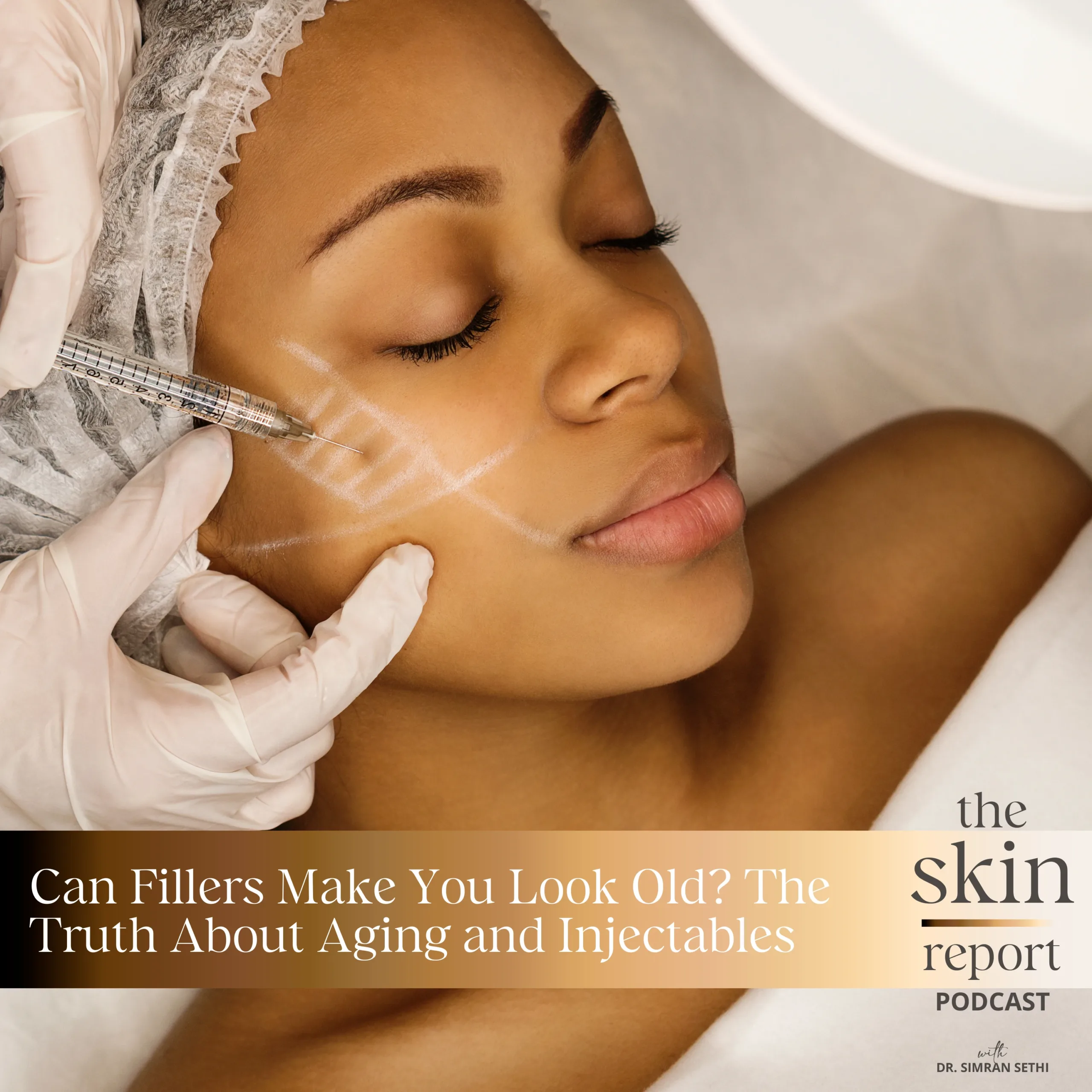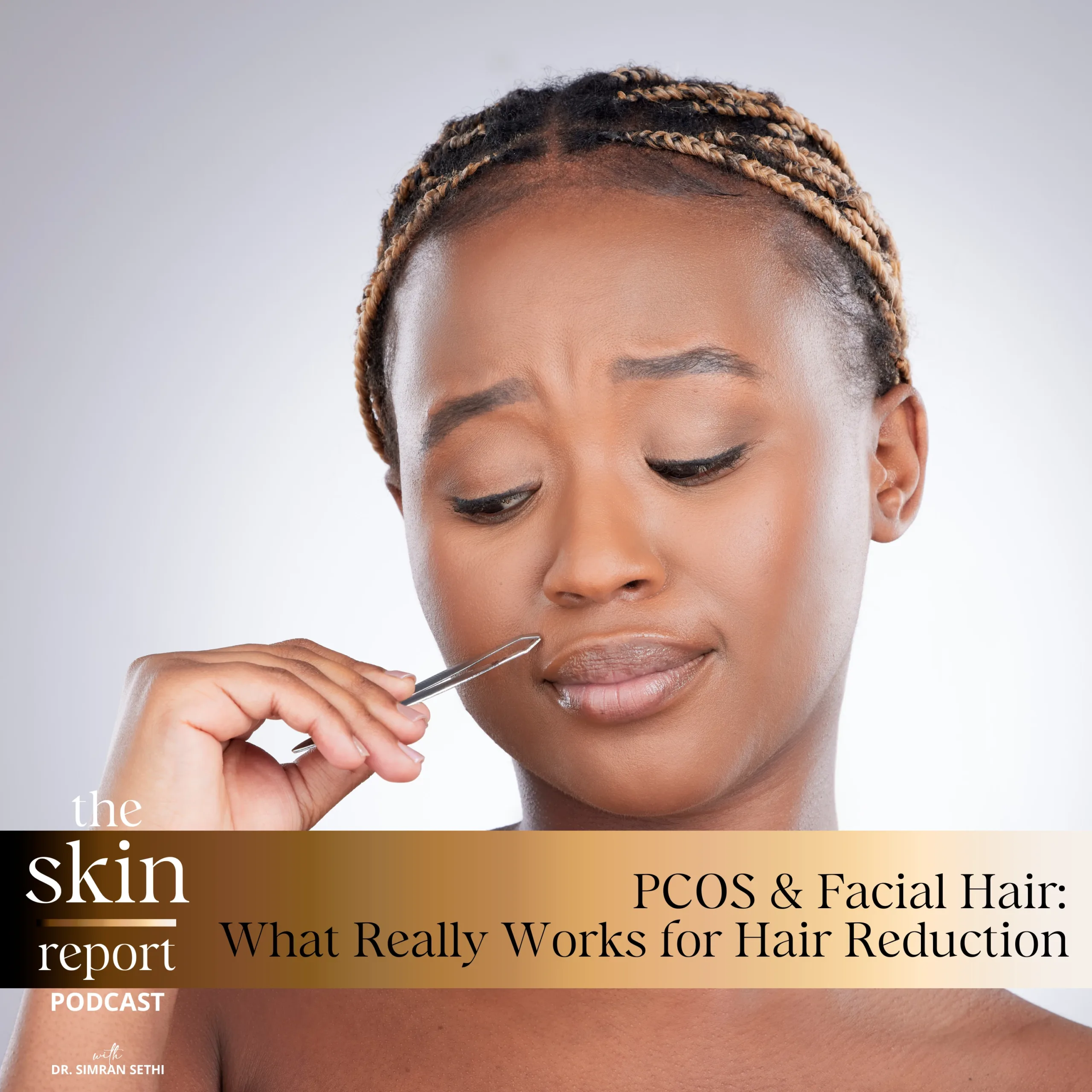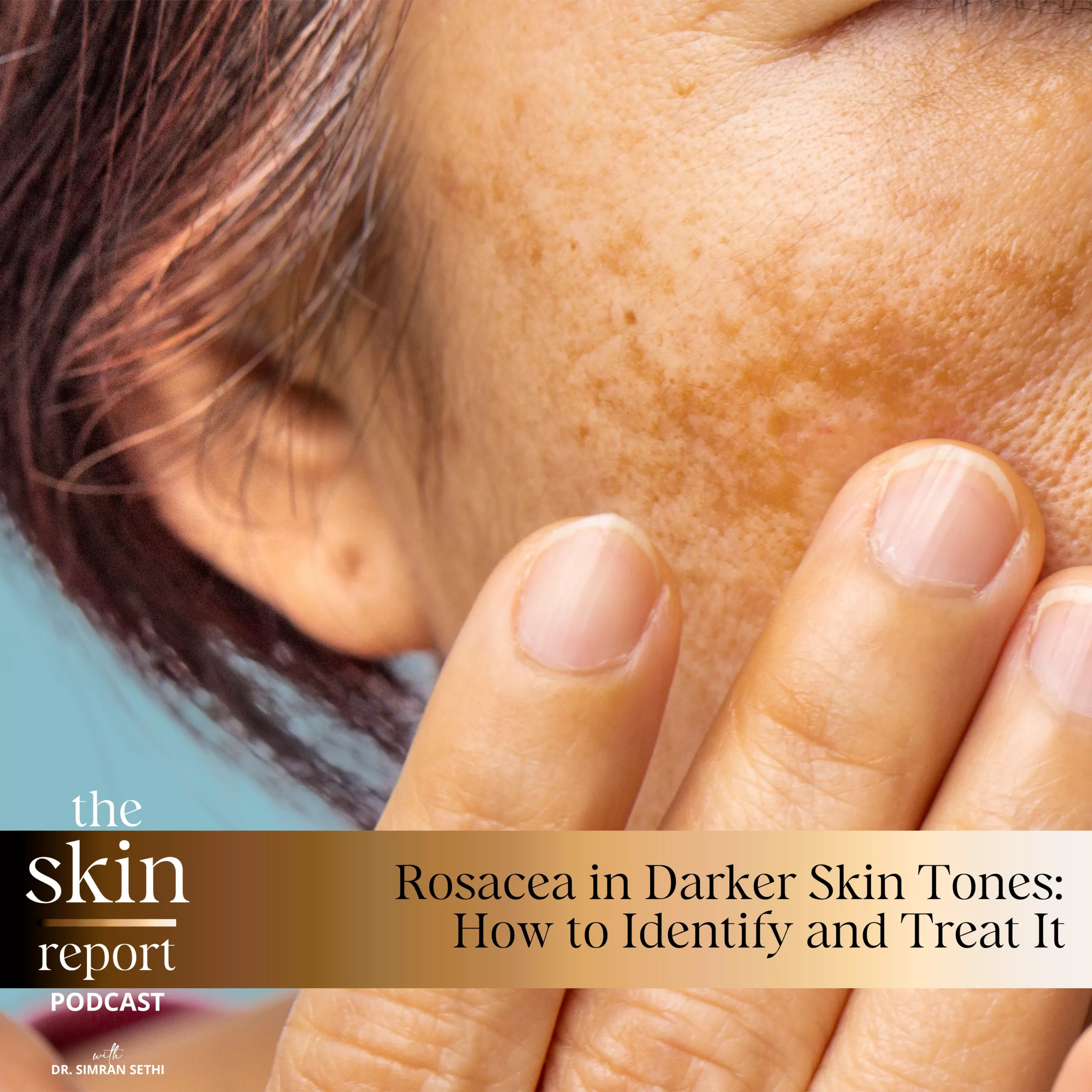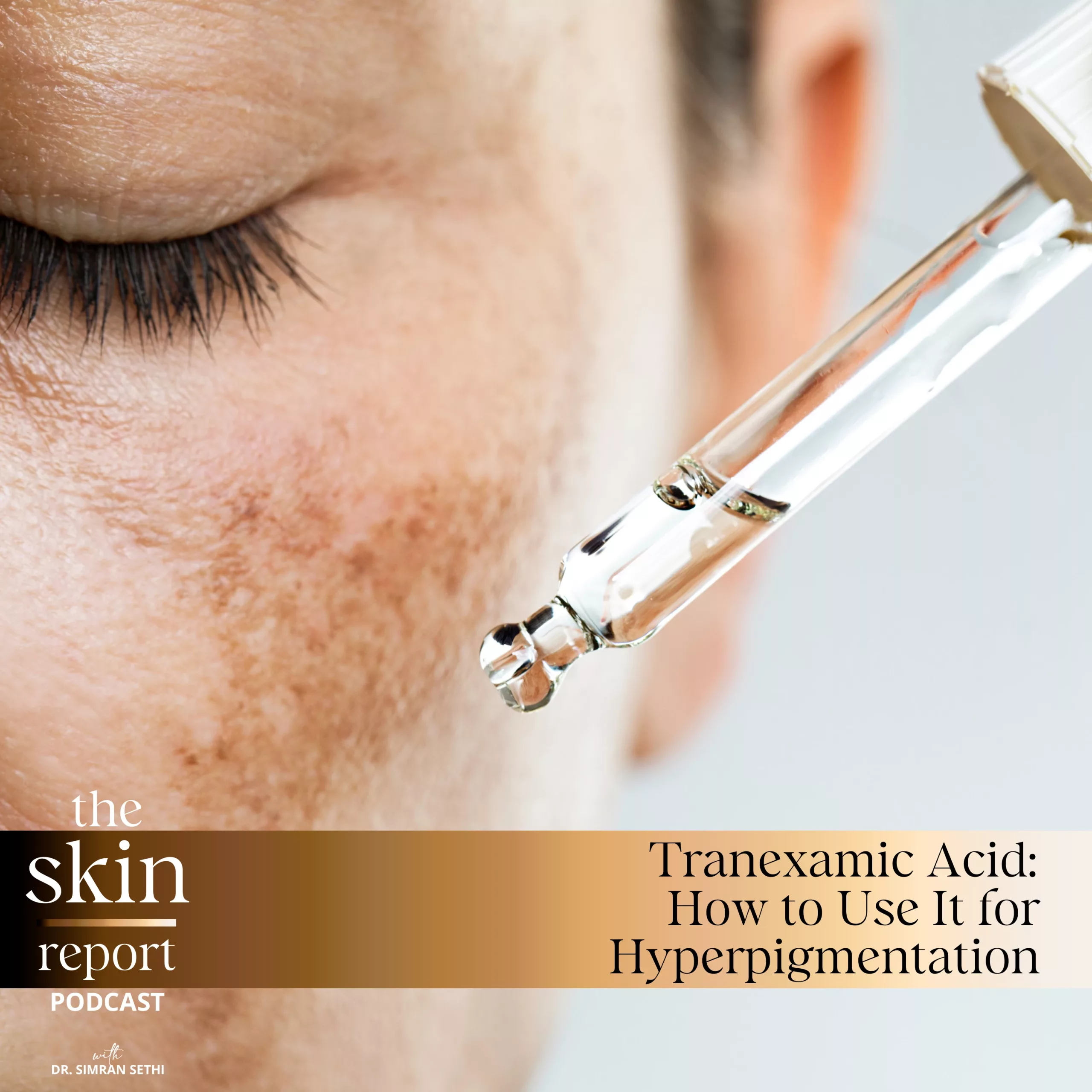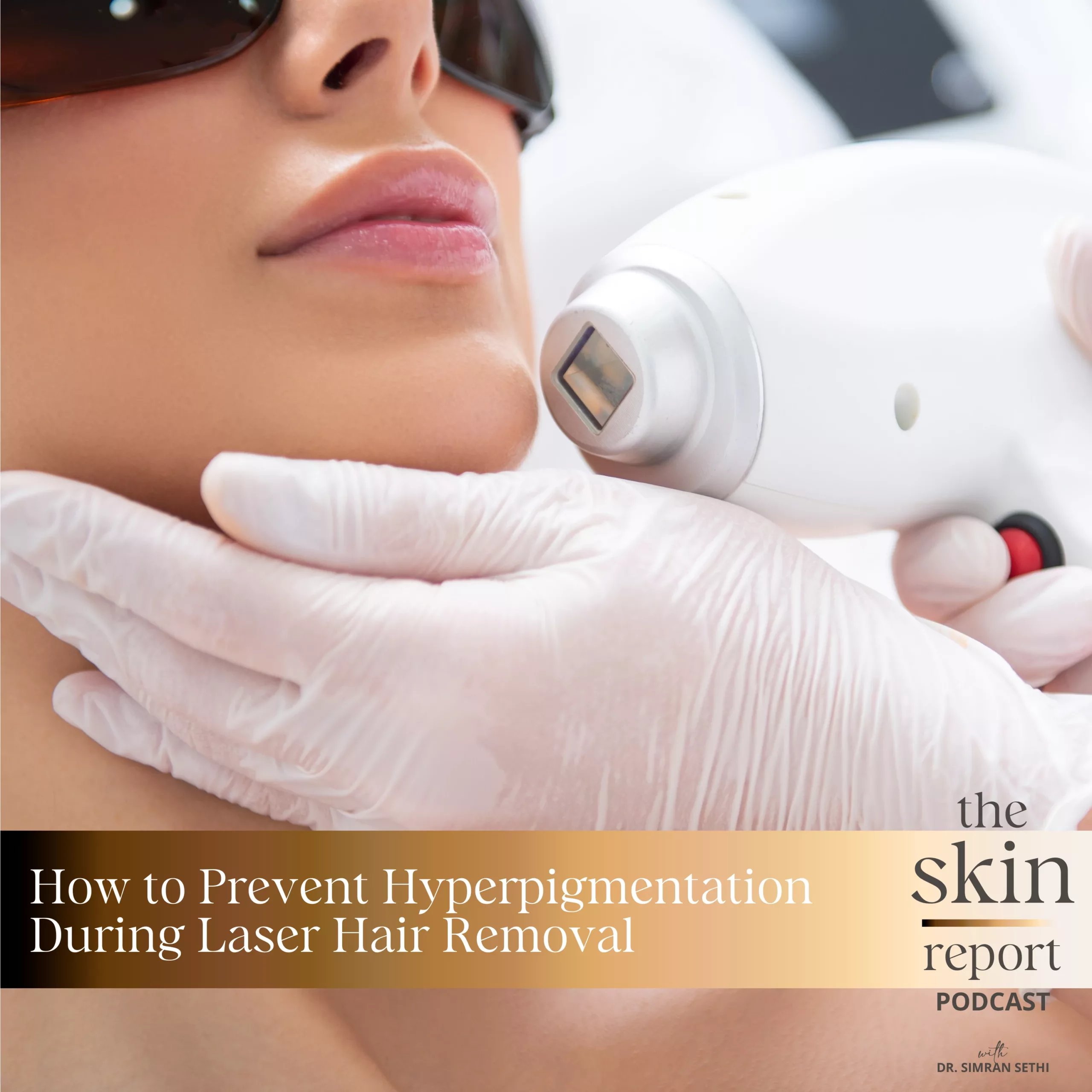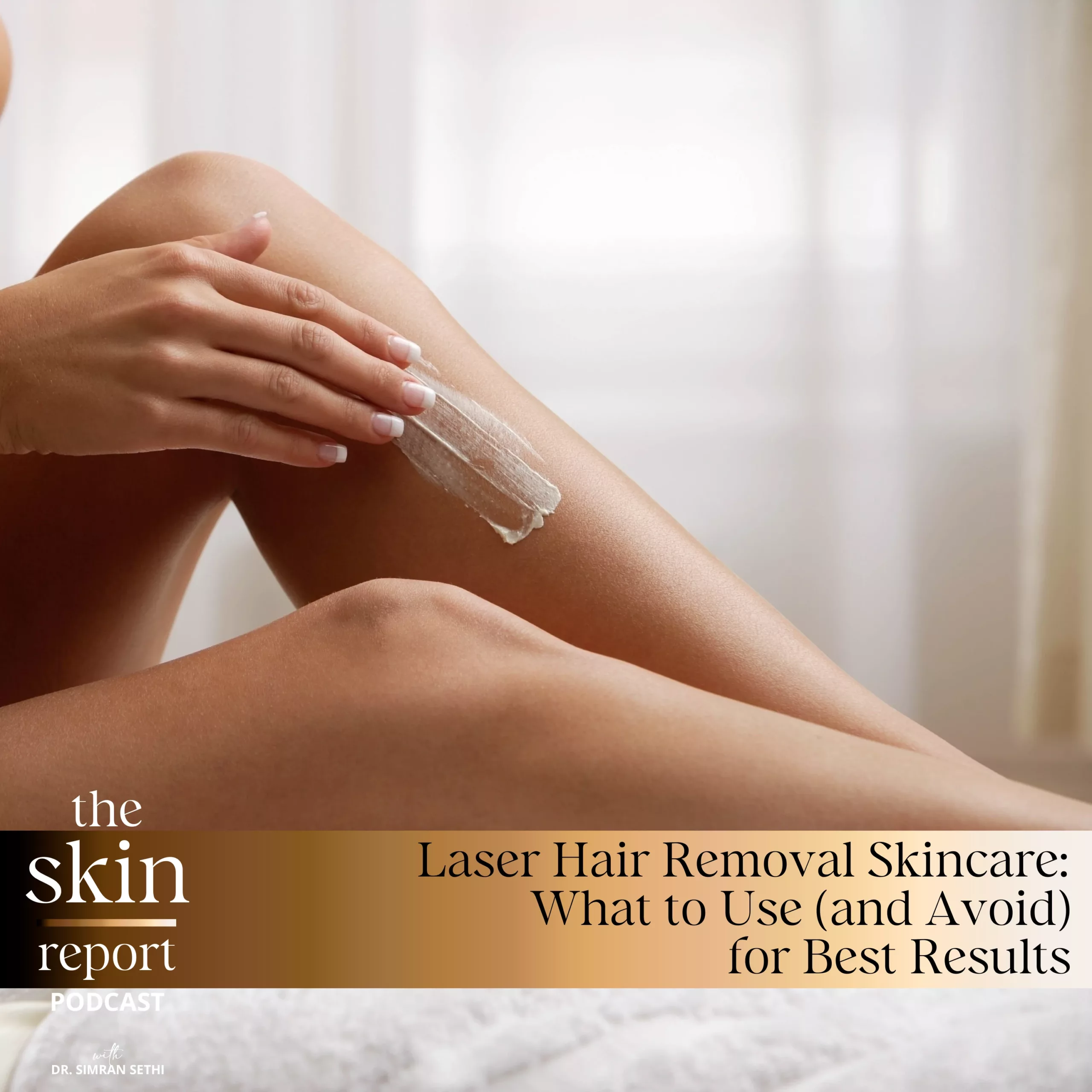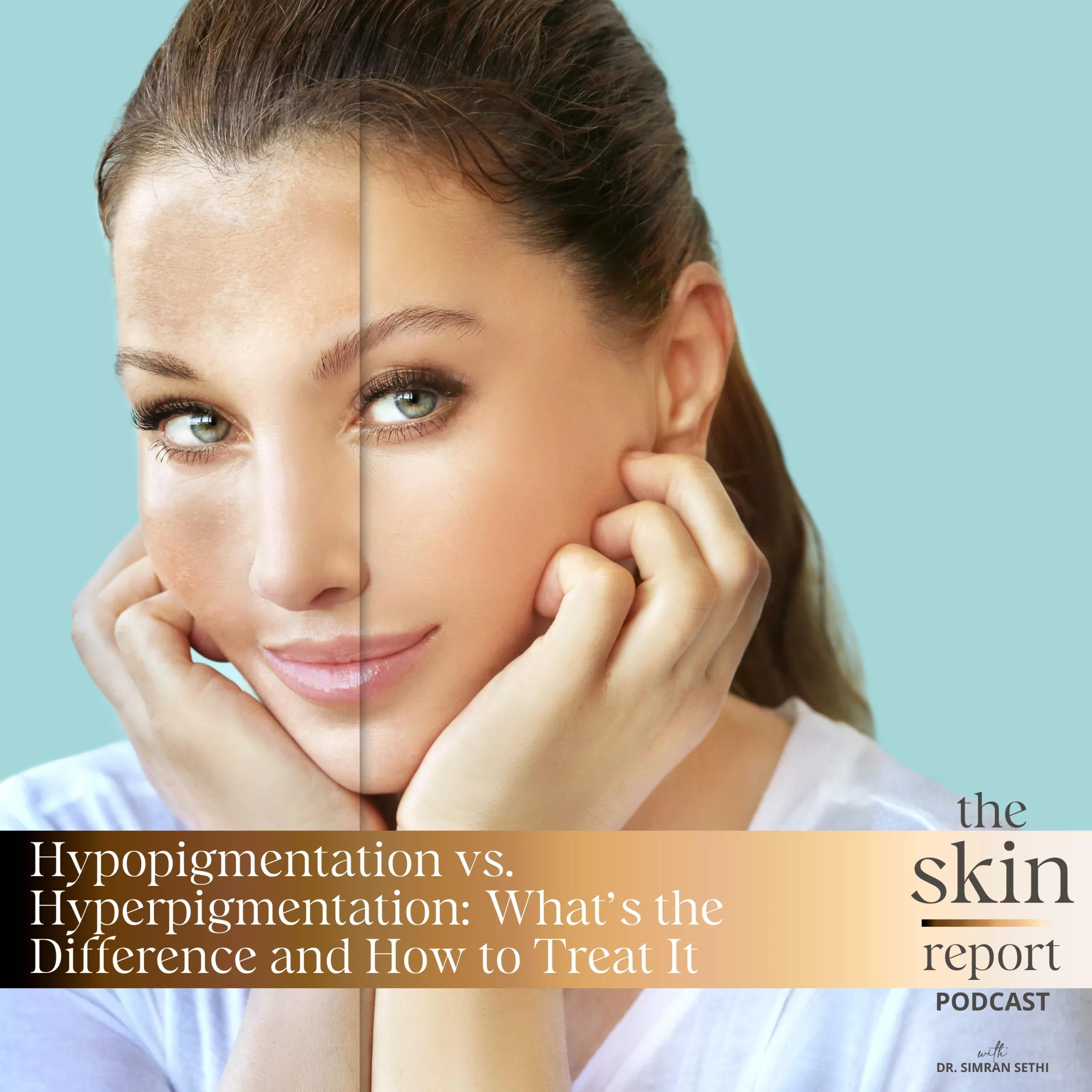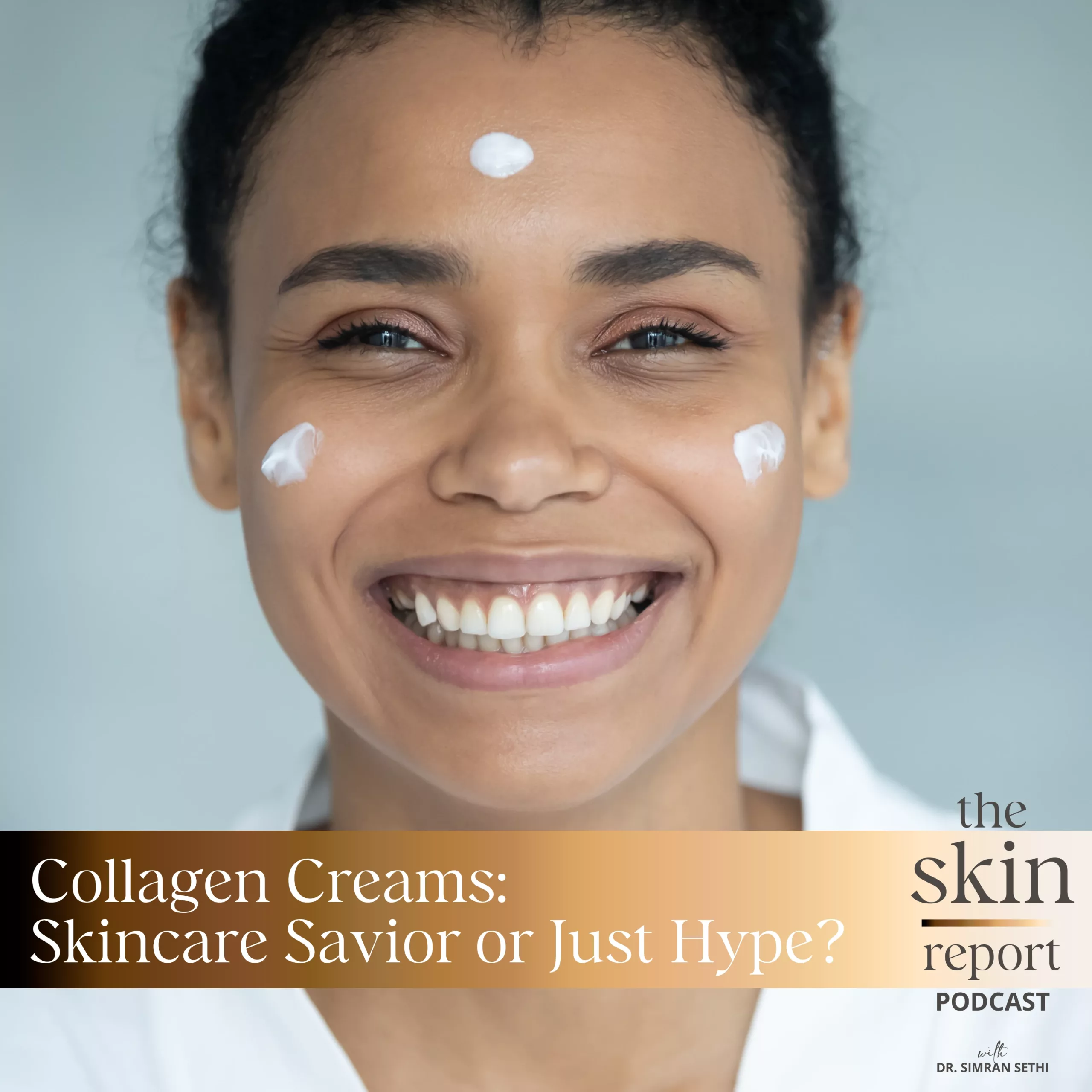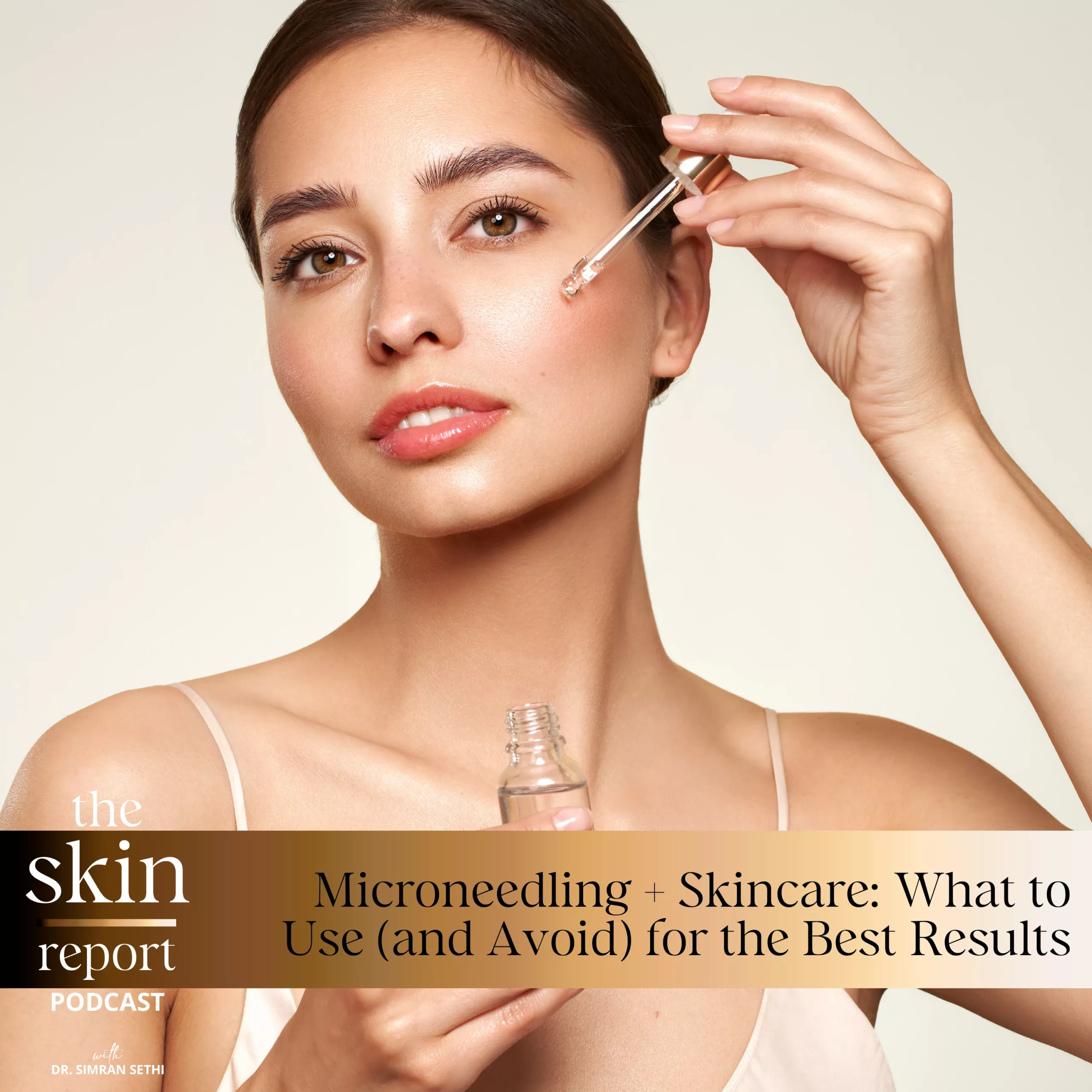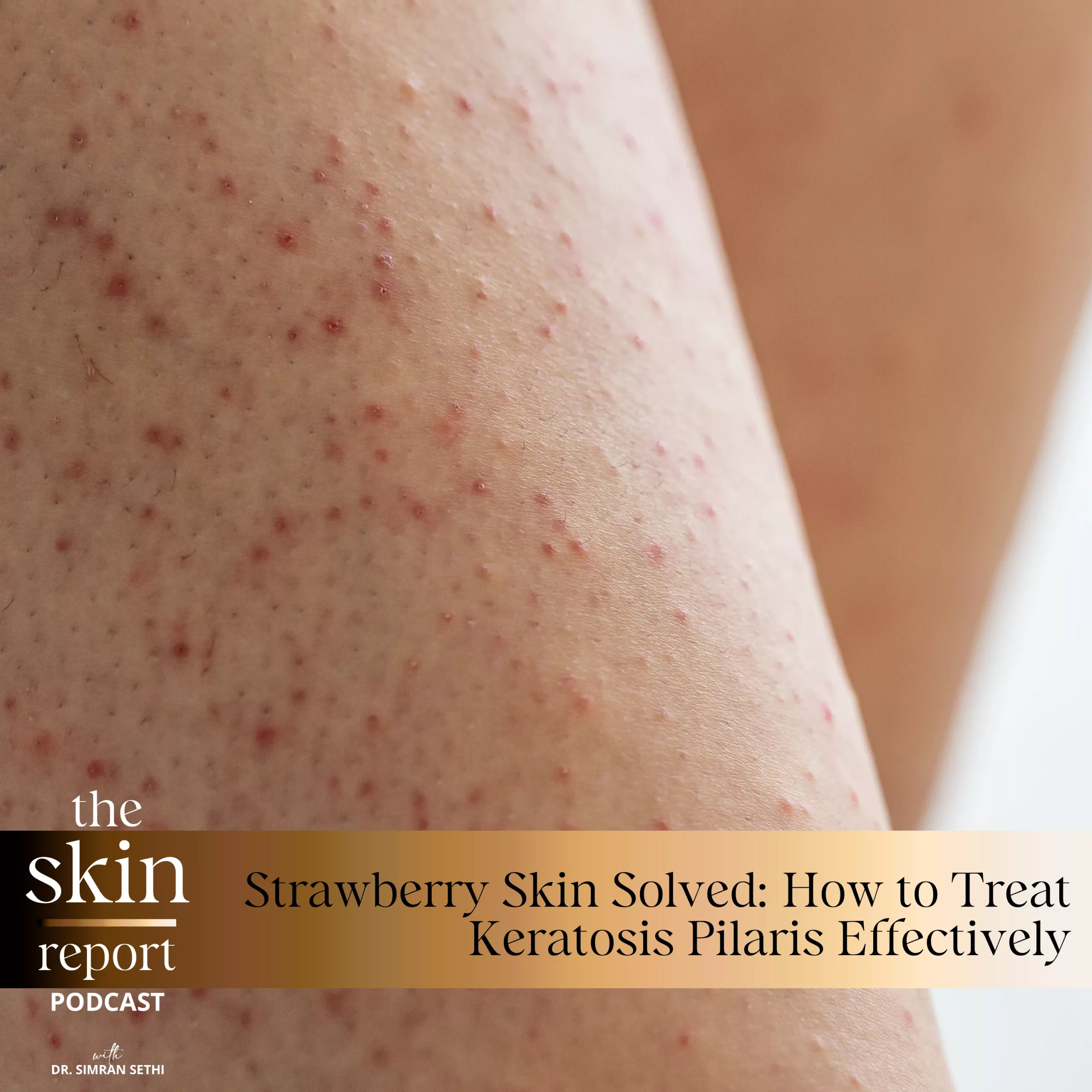IV Injections for Skin Lightening
Skin Lightening Pt. 2
Skincare is complex, especially when it comes to caring for your natural complexion! While some products may fail to deliver results, others can use harmful ingredients that damage the skin. However, using science-backed skincare knowledge, you can identify which formulations contain safe ingredients to brighten and nurture your beautiful skin.
The Skin Report is a podcast created to educate listeners on methods to improve skin health for people of all ethnicities and ages. On this episode, host Dr. Sethi explains how specific skincare ingredients can safely improve skin health while producing brightened results. She describes how ingredients like Retinol, Vitamin C, Tranexamic Acid, Niacinamide, and Azelaic Acid can be incorporated within skincare to provide skin-brightening effects for a beautiful glowing complexion. In addition, she reviews some of the top recommended products on Amazon with these ingredients and gives listeners the inside scoop on which are safe and effective.
Follow and DM a question for Dr. Sethi to answer on The Skin Report Podcast:
Renew Beauty Instagram:
https://www.instagram.com/renewmd_beauty/
RenewMD Beauty Medical Spas, California:
https://renewmdwellness.com/
The Skin Report Season 1 Episode 32: Retinol:
https://theskinreportbydrsethi.com/season-1-episode-32-retinol/
This transcript was exported on April 18, 2023 -view latest version here.
Skincare can sometimes feel overwhelming. Whether it’s finding the right products, ingredients, or treatments, there’s a lot out there, but not always for people of African, Hispanic, Middle Eastern, and East and South Asian descent. That’s why I set out to educate myself and others so that we can all feel beautiful in our skin. Hello, and welcome back to The Skin Report. I’m Dr. Simran Sethi, an internal medicine doctor, mom of three, and CEO and founder of RenewMD Medical Spas and Skin by Dr. Sethi.
Last week, we spoke on the complex topic of skin lightening. We acknowledged the history of skin whitening as a consequence of colonialism, as well as dove into how the skin gets its pigment and the different types of melanin. I highly recommend listening to that entire episode before diving into this one, as today, we will be continuing that discussion. I began this series to educate, not to judge, on safe skin lightening treatments used to address scarring, UV damage, acne and more. Using IV glutathione, a strong antioxidant, and vitamin C injections, we can brighten the skin, reverse damage, and boost our skin health. All of this is done by those who love their identity and heritage, and not out of a self-hating, colonialist mindset. It also does not drastically change your appearance or race. However, if injections seems scary or intimidating, there are other options.
Today, I want to tackle the most popular skin lightening and brightening ingredients to let you know what is safe to use, what will work with your melanin, and what is effective. Whether you believe in this approach or are apprehensive, my goal here is to keep you and your skin happy and healthy, so let’s dive in. When looking for skin lightening products, there are a couple of ingredients you will want to keep in mind. Some of my go-tos are retinol, vitamin C, tranexamic acid, niacinamide, azelaic acid. So let’s go over them first, starting with a favorite of the podcast, retinol. Retinol has always been touted for its anti aging and acne fighting properties, and for good reason. As a skincare powerhouse, retinol can reduce the look of wrinkles and spots in only a few weeks. If you’re interested in retinol’s anti aging abilities, what concentrations you should opt for, and how to properly and safely incorporate it into your nighttime skin routine, check out season one, episode 32, which will be linked below.
For today’s show, I would like to talk about retinol’s role in reducing uneven skin tone and inflammation. Retinol increases skin cell turn over and production of collagen. When this happens, errors in the skin like increased or uneven pigmentation are corrected or reduced. Now a lot of people don’t see retinol as a skin lightening agent, as it frequently causes breakage in the skin barrier when used incorrectly. This breakage in the skin barrier feels like dry and sensitive skin and appears in darker skin tones as increased pigmentation. That is actually why I developed my retinol lipid complex. This serum combines physician grade retinol and lipids to build new healthy skin. The lipids repair the skin barrier, make the skin glow, and reduce pigment. Any pigmentation corrective serum or skincare routine should include at least a .5% retinol in it. I would also recommend avoiding retinol concentrations higher than .5, as they tend to really increase sensitivity and more pigmentation. And studies have repeatedly shown that they have the same skin cell turnover rate and collagen production as lower concentrations.
The next ingredient I want to tackle is another skincare superstar, vitamin C. Vitamin C serums are commonly associated with skin brightening, and for a good reason. Vitamin C fortifies the skin’s defense against oxidative stress and photoaging. Both these skin insult cause increased pigmentation, and vitamin C actively fights these changes throughout the day and night. When using vitamin C during the day, it continuously fights damage from pollution and the sun, though you still need to apply sunblock. During the night when our body and skin go into rebuilding mode, the vitamin C strengthens collagen production. When we return, we will go over three lesser known ingredients that can help with skin lightening and brightening. The first lesser known ingredient I want to discuss is tranexamic acid. Tranexamic acid, or TA, has been gaining momentum in treating hyperpigmentation, especially in melasma. Most women with melasma have encountered hydroquinone, which we’ll discuss later. And some know that you cannot use hydroquinone indefinitely, as it can cause a paradoxical grayish skin appearance. I put my patients on hydroquinone all the time, but I’ve found that it’s difficult to take them off of it, as they associate it with skin brightening and uneven tone correction and don’t want to stop using it. This is where TA comes in. TA interferes in the pathway that brings dark spots or pigmentation to the surface of the skin. This makes it a strong agent for correction of melasma, post-inflammatory hyperpigmentation, and sun damage. Studies have shown that it is as effective as hydroquinone, but does not increase skin sensitivity and/or cause any skin discoloration issues like hydroquinone if used for a long time.
Next, I want to tackle niacinamide, also known as vitamin B3. Niacinamide is frequently found in moisturizers as it’s hydrating, but can also reduce uneven pigmentation. The increased hydration helps to keep the skin barrier intact throughout the day, but niacinamide also aids with pigment problems in another way. Like TA, niacinamide interferes with the cell signaling pathway between our pigment producing cells, melanocytes, and our most superficial skin layer, the keratinocytes. This means that skin and cells are not converted to dark spots and brought to the skin surface, where they’re visible.
Lastly, I want to touch on azelaic acid. Azelaic acid is a newer compound that is starting to show up in skin brightening formulations, and again, for good reason. It is anti inflammatory, and in darker skin tones, just a reduction in inflammation will brighten skin and correct uneven pigmentation. I like to use this in acne prone skin to treat post-inflammatory hyperpigmentation, as it soothes inflammation and helps repair the skin barrier. In my opinion, azelaic acid is still a weaker agent than the ones we discussed already, so it works better in combination with other ingredients mentioned above.
There are a lot of lightening and brightening products out there, and if they have our favorite ingredients in them, you are good to go. However, there are many products on the market that can also be harmful or simply ineffective. But what are they? What should you avoid? Next, we’ll be going over the ingredient flops. We’ve discussed this on the show before, but no matter your end goal, you should never use a product with bleach in it. It should be avoided at all costs. Not only is it unsafe, it is also ineffective. Bleach will only aggravate your melanin, causing more hyperpigmentation. Now let’s move on to skincare ingredients that are ineffective for skin lightening and brightening, and why.
First, I’d like to tackle lactic or glycolic acid, otherwise known as AHAs and BHAs. These are frequently marketed as skin lightening agents, but they are in fact chemical exfoliants. I can’t tell you how many times I see these so-called glow serums or brightening serums, and while exfoliation can brighten the skin, many times these cause increased sensitivity, breakage in the skin barrier, and increased pigmentation in darker skin tones. AHAs and BHAs are better choices for oily and acne prone skin, and people should use them until acne has subsided, and then start skin cycling by using them every other day if their skin feels sensitive. For normal, dry, and mature skin, I feel that AHAs and BHAs are too strong an exfoliant, and therefore tend to give the opposite effect of making the skin appear more uneven and pigmented.
The next ingredient is hydroquinone, which I mentioned previously. I have a love and hate relationship with hydroquinone. Yes, it directly reduces the activity of the enzyme tyrosinase, that promotes pigment production. And yes, I use it on my patients to give them faster skin brightening and uneven skin tone correction. But it is an agent that causes increased sensitivity in many women of color, or if they tolerate it, they have a difficult time stopping it. It is a very, very important thing to understand that hydroquinone cannot be used indefinitely, as long-term use will cause a skin condition called ochronosis, that is difficult to treat and causes the skin to have a gray appearance. When I use it in my patients, I put them on it for four months and then stop. So it is a effective and heavily studied, but has to be used correctly for results.
Lastly, I want to look to peroxide. This is not something that the skincare industry necessarily endorses, but you will be surprised by how many bleaching creams and DIY home regimens use this. Peroxide is a bleaching agent, but in the skin, it simply damages the skin barrier. If you do this, you will hyper-pigment due to a condition called PIH, or post-inflammatory hyperpigmentation, and this can be severe. After the break, we will break down some popular brightening products and see if they are a favorite or a flop.
After going through the ingredients, let’s look at some top recommended products on Amazon, and see if these popular products are worth it. First, Clinique’s Even Better skin tone correcting moisturizer. This product is a little puzzling because it states that it is for skin types one and two, but then it also claims to be safe for all skin types. It does not have any nourishing ingredients in it, and it’s essentially a combination of SPF 20 and salicylic acid. Yes, the SPF should prevent more dark spots, but this is only an SPF 20, which is less then the recommended level for prevention of sun damage. It also has salicylic acid, which is a chemical exfoliant. And if it is formulated within a moisturizer, it can’t effectively exfoliate either. So overall, this combination of ingredients seems very puzzling to me, and I feel that if you have dry or sensitive skin, this combination may worsen your dryness.
Next, SkinCeuticals Phyto A brightening treatment. I like the combination of ingredients in this serum. It has 3% azelaic acid and 2% alpha arbutin, and finally, a calming botanical blend. This combination of ingredients delivers an effective blend to even out skin tone without any harmful effects on the skin barrier and should be suitable for dry, oily, and normal skin, and all skin tones. Finally, DrunkElephant’s A-Passioni retinol cream. I have mixed feelings about this product because of two main reasons. First, it is a 1% retinol, a concentration that has been shown in numerous clinical studies to increase the chances of erythema and skin dryness, but has the same efficacy as a .5% concentration. While some can do well with this concentration, many may still have aggravated skin from it.
Second, Drunk Elephant’s website states the the serum can be used during the day or night, which again is incorrect. When retinol is exposed to sunlight, it will get denatured and rendered ineffective. I know that you can apply sunblock to keep that from happening, but sunblock application is not strong enough to do that. Not only is this a higher concentration, but the company is instructing people to use it during the day and night, with daytime use just being ineffective and having a greater chance of sensitivity. Now I do like that the serum combines nourishing oils and fats in it to keep it from drying the skin, but with the 1% concentration, I would use it sparingly in my skin tone, and would advise anyone with skin type four and greater, or mature skin, to do the same.
There are a lot of products out there with not always the best ingredients suited for your skin. However, there are some gems as well. Look for a retinol .5%, vitamin C serum, and a product with niacinamide. Be sure to avoid AHAs and BHAs for brightening, as these are chemical exfoliants. And while they’re great exfoliants, they should be used as such. If you don’t know what the serum contains, you may be using an additional exfoliant and over-processing your skin. At the end of the day, the key to brighter skin is healthy skin. How we achieve that healthier skin is by using our knowledge of ingredients to choose products that will not damage the skin barrier, but rather repair and nourish it, like my retinol lipid complex or any products in my line. Thanks for listening. And until next time, love the skin you’re in and celebrate your beauty.
If you’d like to learn more about science backed skincare or medical aesthetic treatments, please subscribe to and turn on notifications for The Skin Report, so you always know when a new episode is up. We have a newsletter that you can sign up for on theskinreportbydrsethi.com, so that you can stay up-to-date on all our new episode, blogs, products and more. Additionally, if you have a skincare question or want to make an episode topic recommendation, please message me at theskinreportbydrsethi.com, which is linked in my show notes, and I’ll be sure to answer your question in an episode soon. We’ve received some great questions so far, and I will try and answer them at the end of every episode, so keep them coming.
Transcript by Rev.com


